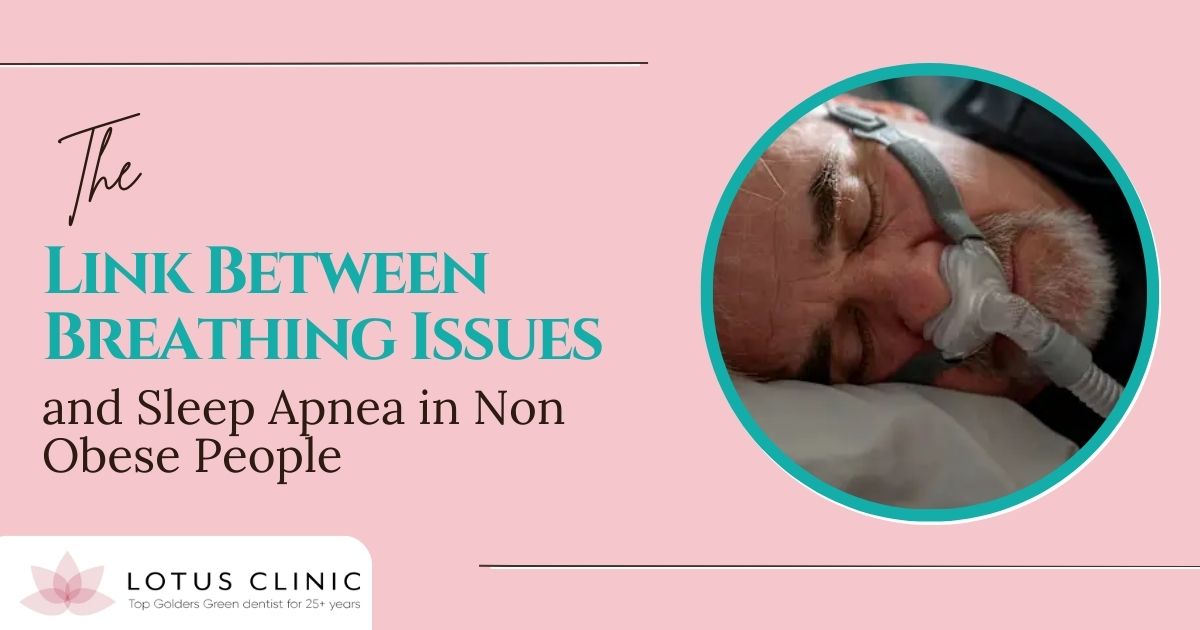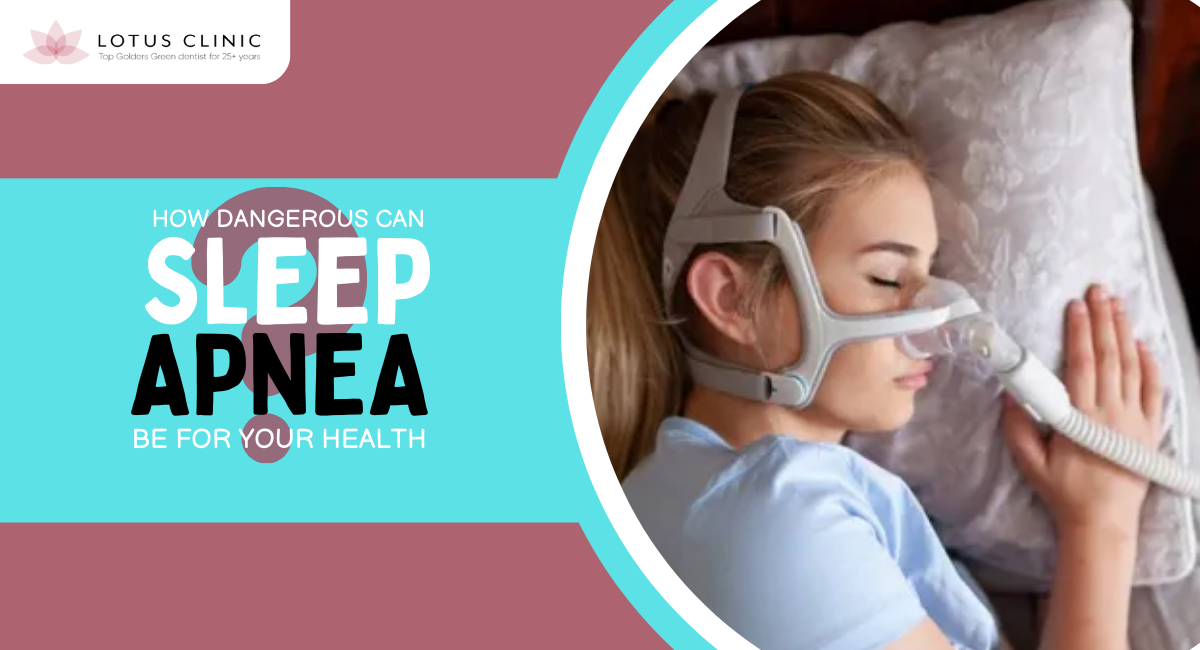943 Finchley Rd, London NW11 7PE
The Link Between Breathing Issues and Sleep Apnea in Non-Obese People

Sleep apnea is often associated with obesity, but did you know that non-obese individuals can also suffer from this disruptive sleep disorder?
While obesity is a major risk factor, many people without excess weight still experience breathing difficulties during sleep, leading to serious health issues. This blog explores the surprising link between breathing issues and sleep apnea in non-obese people, shedding light on how it affects overall health, sleep quality, and daily life.
If you don’t have the classic obesity-related signs of sleep apnea, you might assume you’re safe. But sleep apnea can still disrupt your breathing, even if you’re fit and healthy. It’s essential to recognize the symptoms early, especially since this condition often goes undiagnosed in non-obese individuals.
From the causes to treatment options, we’ll uncover how sleep apnea in lean people presents itself, why it’s dangerous, and what you can do to prevent or manage it. So, let’s dive into this crucial topic and clear up the confusion surrounding sleep apnea in non-obese individuals.
What Is Sleep Apnea?
Sleep apnea is a sleep disorder where breathing repeatedly stops and starts during sleep. These interruptions can last for a few seconds to minutes and occur multiple times a night. The condition can disrupt sleep and affect the overall quality of life, causing daytime fatigue, mood swings, and other health problems.
- Obstructive Sleep Apnea (OSA): The most common form, caused by a blockage in the airway due to relaxation of throat muscles.
- Central Sleep Apnea: A less common form, where the brain fails to signal the muscles to breathe.
- Recognizing Symptoms in Non-Obese Individuals: Symptoms include loud snoring, choking, or gasping during sleep, even in individuals without obesity.
How Sleep Apnea Affects Breathing?
Sleep apnea disrupts your breathing patterns during sleep, causing your airway to collapse or narrow. This interruption triggers short-term oxygen deprivation, which disrupts the body’s normal sleep cycles.
- Airway Muscles: When the muscles of the throat and tongue relax too much during sleep, they obstruct the airway.
- Oxygen Levels: Repeated apnea events lower oxygen saturation in the blood, which the body tries to correct by briefly waking up to restart normal breathing.
- Body’s Response: The body activates the sympathetic nervous system (fight or flight), leading to an increase in heart rate and blood pressure during each episode, which can become dangerous over time.
Identifying Sleep Apnea in Non-Obese Individuals
Many people don’t associate sleep apnea with non-obese individuals, but it can still occur. Recognizing the symptoms early is crucial for preventing long-term health complications.
- Common Symptoms: Loud snoring, gasping for air, waking up with a dry mouth, and feeling exhausted during the day despite adequate sleep.
- Genetic and Anatomical Factors: Small airways, enlarged tonsils, or a large tongue can increase the likelihood of airway obstruction, even in lean individuals.
- Undiagnosed in Non-Obese People: Since non-obese individuals don’t fit the typical profile, sleep apnea may go unnoticed, leaving underlying issues untreated.
Risk Factors for Sleep Apnea in Non-Obese People
While obesity is a major risk factor for sleep apnea, other factors also contribute to the condition in non-obese individuals. These risk factors might be more subtle, but they still play a significant role.
- Age and Gender: Men over 40 are more likely to develop sleep apnea, and the risk increases with age.
- Family History: A family history of sleep apnea can increase the likelihood, as genetics often play a role in airway structure.
- Health Conditions: Conditions like nasal congestion, hormone imbalances (such as hypothyroidism), or even certain medications can increase the likelihood of developing sleep apnea.
The Link Between Breathing Issues and Sleep Apnea
Breathing irregularities during sleep apnea episodes are more than just annoying; they can have serious long-term health consequences. These episodes result in oxygen deprivation, which affects every part of the body.
- Mechanisms of Breathing Issues: During apnea episodes, the airway becomes blocked, preventing air from reaching the lungs.
- Oxygen Deprivation: Each apnea event leads to a drop in oxygen levels, which the body works hard to correct by briefly waking the individual.
- Long-Term Effects: Untreated sleep apnea can lead to high blood pressure, heart disease, and stroke, as the body remains in a heightened state of stress during each episode.
Managing sleep apnea early can reduce these risks and improve overall health.
Diagnosing Sleep Apnea in Non-Obese Individuals
Accurate diagnosis is key, especially for non-obese individuals where symptoms may be less obvious. Getting tested is essential for effective treatment.
- Polysomnography (Sleep Study): This is the gold standard for diagnosing sleep apnea. It monitors brain activity, eye movements, muscle activity, heart rate, and airflow during sleep.
- Home Sleep Apnea Tests: For a more convenient option, home sleep studies are available, providing valuable insights into sleep patterns.
- Early Diagnosis: Timely diagnosis ensures better management, helping to prevent complications such as cardiovascular issues, daytime fatigue, and diminished quality of life.
Treatment Options for Non-Obese Individuals with Sleep Apnea
There are various effective treatments for sleep apnea, even for those without obesity. The choice of treatment depends on the severity of the condition.
- CPAP Therapy: Continuous Positive Airway Pressure (CPAP) is the most common treatment, keeping the airway open during sleep.
- Dental Appliances: Devices that reposition the jaw to keep the airway open can be effective for mild cases.
- Lifestyle Changes: Improving sleep posture, avoiding alcohol and sedatives, and managing allergies or nasal congestion can help reduce symptoms.
- Surgery: In severe cases, surgical options like tonsillectomy or tissue removal may be necessary.
Breathing issues and sleep apnea in non-obese individuals are real concerns that often go unnoticed. Identifying symptoms early, along with understanding the risks and treatment options, can prevent long-term health problems. If you suspect sleep apnea, seeking a proper diagnosis is crucial. With the right treatment plan, you can improve your quality of life and protect your health. Don’t let misconceptions about sleep apnea being limited to the obese prevent you from taking action!






